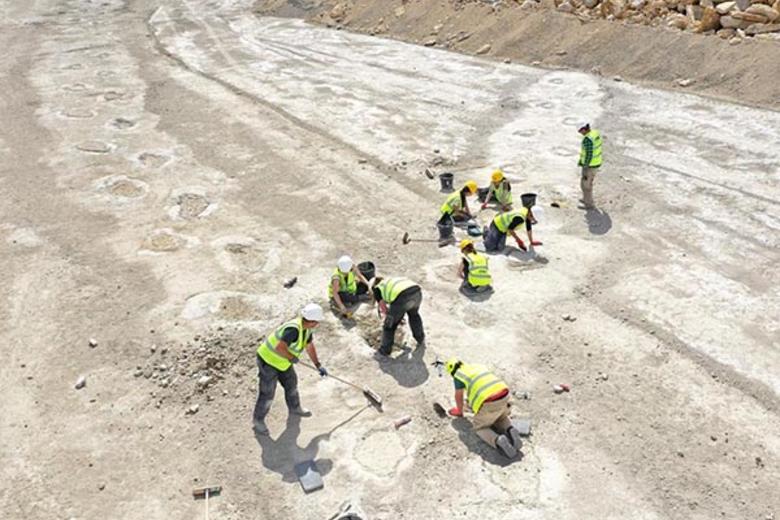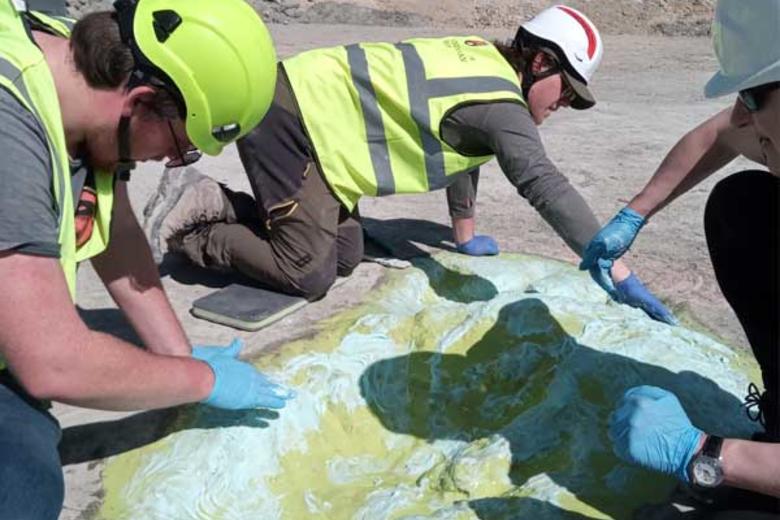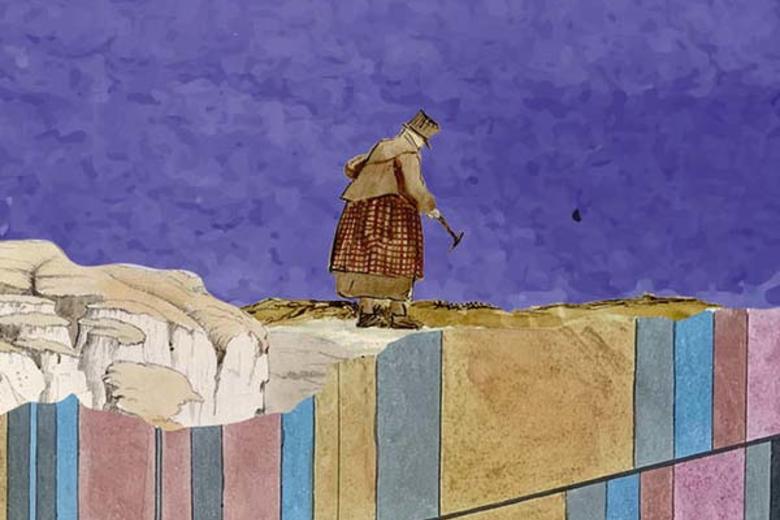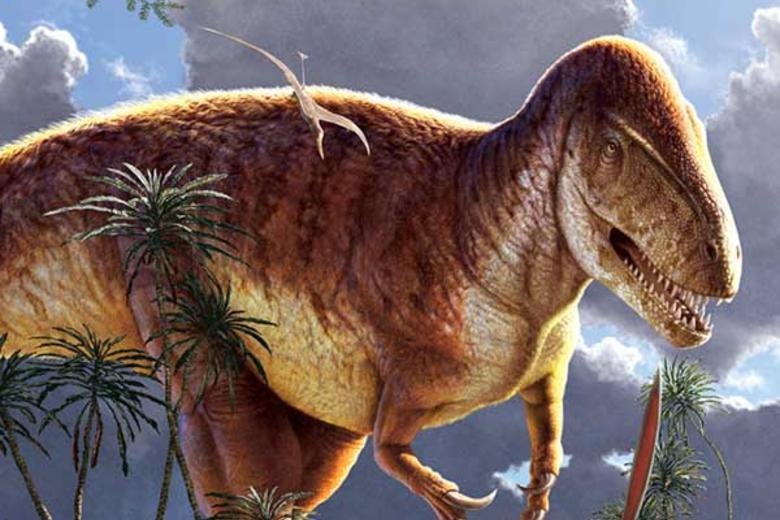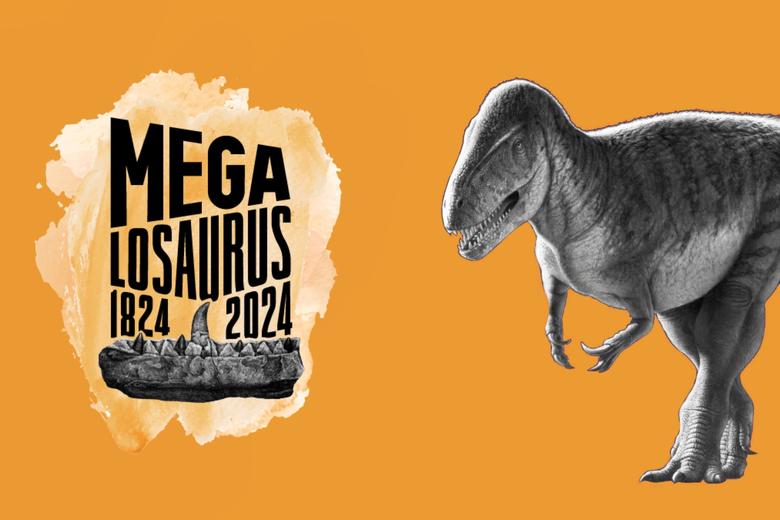Uncovering Oxfordshire’s ‘dinosaur highway’
The discovery of hundreds of dinosaur footprints in Oxfordshire gives new insights into Jurassic Britain
In a stunning find, researchers from the Universities of Oxford and Birmingham have uncovered a huge expanse of quarry floor filled with hundreds of different dinosaur footprints, creating multiple enormous trackways. Dating back to the Middle Jurassic Period (around 166 million years ago), the trackways form part of a huge ‘dinosaur highway’ and include footprints from the 9 metre ferocious predator Megalosaurus, and herbivorous dinosaurs up to twice that size.
The excavation was broadcast on BBC Two’s 'Digging for Britain' and featured in our own exhibition 'Breaking Ground' here at the Museum. (Click here for the press release (PDF))
https://www.youtube.com/embed/u8WAS4WjQZ0?si=tLTrAgFurKS2_lHk
The dig, carried out at Dewars Farm Quarry in Oxfordshire, uncovered five extensive trackways with evidence of more in the surrounding area. The longest continuous trackway measured more than 150 metres in length. Four of the trackways were made by gigantic, long-necked, herbivorous dinosaurs called sauropods, most likely to be Cetiosaurus, an up to 18-metre-long cousin of the well-known Diplodocus. The fifth trackway was made by the carnivorous theropod dinosaur, Megalosaurus which had distinctive, large, three-toed feet with claws. One area of the site shows the carnivore and herbivore tracks crossing over, raising questions about whether and how the two were interacting.
Megalosaurus was the first dinosaur worldwide to be scientifically named and described in 1824, and kick-started the last 200 years of dinosaur science.

© Mark Witton
The new trackways add to the significance of the area, and even though the discoveries are separated by just thirty years, modern techniques and technology mean the prints can be recorded much more comprehensively than ever before.
Prof. Richard Butler, Professor of Palaeobiology at the University of Birmingham, said: "There is much more that we can learn from this site, which is an important part of our national Earth heritage. Our 3D models will allow researchers to continue to study and make accessible this fascinating piece of our past for generations to come."
During the new excavation, more than 20,000 images were created of the prints. These will provide a wealth of material for further study and education and could yield valuable insights into how these dinosaurs walked, including speeds, how large they were, and if and how they interacted.
Dr Duncan Murdock, Earth Scientist at OUMNH, said: "The preservation is so detailed that we can see how the mud was deformed as the dinosaur’s feet squelched in and out. Along with other fossils like burrows, shells and plants we can bring to life the muddy lagoon environment the dinosaurs walked through."
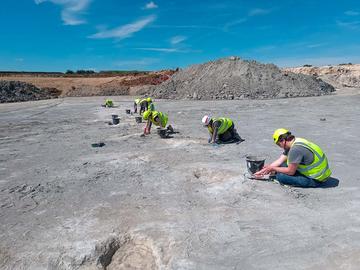
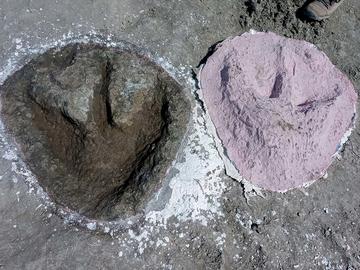
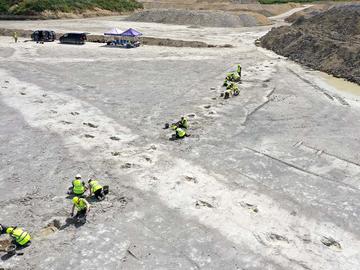
Dr Emma Nicholls, Vertebrate Palaeontologist at OUMNH explained: "Scientists have known about and been studying Megalosaurus for longer than any other dinosaur on Earth, and yet these recent discoveries prove there is still new evidence of these animals out there, waiting to be found."
The footprints were buried under mud but came to light when quarry worker Gary Johnson felt ‘unusual bumps’ as he was stripping the clay back with his vehicle, in order to expose the quarry floor. At this point, the experts were called in. Working closely with Dewars Farm and Duns Tew Quarry Manager Mark Stanway, and his staff, the Universities of Oxford and Birmingham co-led a team of more than 100 people on a week-long excavation in June 2024. Together, they painstakingly uncovered around 200 footprints and built detailed 3D models of the site using aerial drone photography – documenting the footprints in unprecedented detail for future research.
Prof. Kirsty Edgar, Professor of Micropalaeontology at the University of Birmingham, said: “These footprints offer an extraordinary window into the lives of dinosaurs, revealing details about their movements, interactions, and the tropical environment they inhabited.
Mark Stanway and his team at Smiths Bletchington provided an enormous amount of support, from the initial discovery through to the full excavation. They were invaluable in providing both their extensive expertise in the local geology, and operating specialist equipment such as excavators and rock saws.
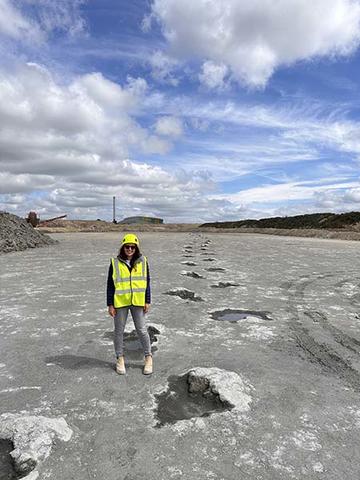
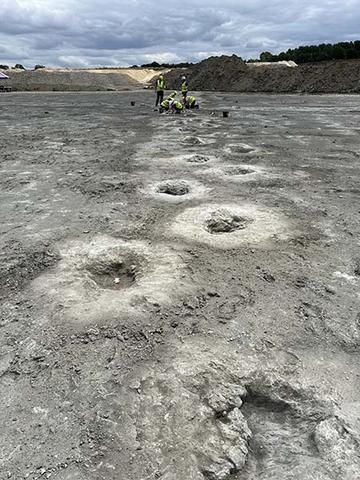
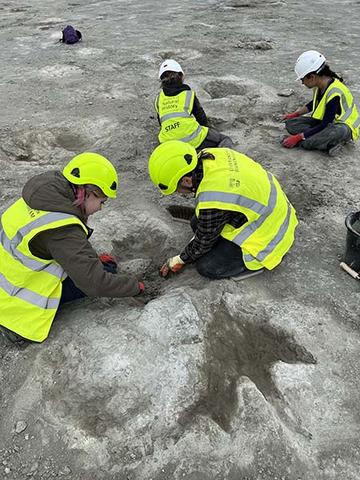
The excavation was funded by the Geologists’ Association, School of Geography, Earth and Environmental Sciences at the University of Birmingham, and the University of Birmingham Alumni Fund.



